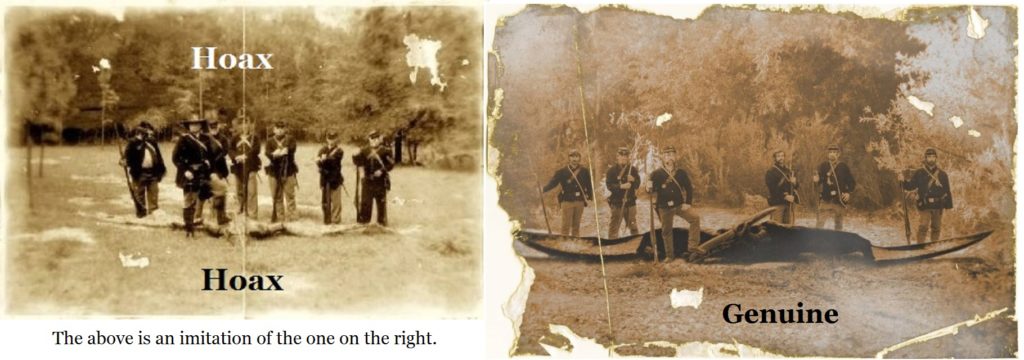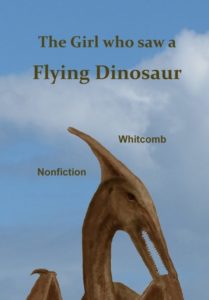An old photograph has been bouncing around the internet for quite some time, with many persons giving it a careless glance but very few indeed examining it closely and with an open mind. In the first few months of 2017, however, that changed.
The “pterodactyl” photo called “Ptp”
Beware of confusing this with a known hoax. Ptp is not the same photo that was created to promote the Haxan Films television show Freakylinks, around the year 2000. Compare the two of them side by side:
See for yourself: hoax versus original photo (click on them)
The older photograph, that was used as a model for the newer fake-photo, has been verified as authentic by two scientists, including the physicist Clifford Paiva, from California. Skeptical remarks about the soldiers have been answered and those careless criticisms have been exposed in the new nonfiction book Modern Pterosaurs.
The Flood of Noah and extant pterosaurs
Religion is related to the “Pteranodon” photograph that is now called “Ptp,” but those skeptical comments from critics who assume extreme bias in all Christian supporters of living-pterosaur investigations—those critical comments are incorrect. Paiva and I have looked carefully at this photo, with an open mind about various possibilities of hoaxing. Ptp has survived the close scrutiny extremely well.
How does an extant pterosaur in the 19th century relate to the Flood of Genesis? If it were only one species of extremely rare pterosaur, one photo by itself would give quite limited support for a literal Flood of Noah, but there’s much more. More than two types of these featherless flying creatures still live on our wonderful planet, and although they appear to be nocturnal (or at least mostly so), their overall existence is not very rare or confined to only one remote area.
Eyewitness reports come from at least five continents, confirming that pterosaurs are seen by countless persons worldwide. The most common type resembles what would be expected of an extant Rhamphorhynchoid pterosaur: It has a long tail with a flange at the end of the tail. The type seen in Ptp, however, is not as common: an apparent Pteranodon or at least a similar Pterodactyloid.
How does that support the literal interpretation of the Flood of Genesis? Although the great majority of pterosaur species appear to be extinct, both major types are still flying overhead at night, in many areas of the world. Although they are uncommon, extant representatives support the concept that the fossils are not nearly as old as many persons have assumed. They have not evolved feathers, nor have enormous changes in anatomy taken place. Since so many recent extinctions have been seen to have come from human interference, we can easily imagine that at least some pterosaur species met a similar fate. The existence of both major types of pterosaur supports a literal Flood of Noah.
###
copyright 2017 Jonathan Whitcomb
.
Consider the following direct evidence for the authenticity of the “pterodactyl photograph” and its significance. Earlier this year (2017), the physicist Cliff Paiva and I independently examined belt buckles on those soldiers in Ptp. We both came to the same conclusion: The soldier that appears to be standing in front of the animal is indeed closer to the camera than the other soldiers.
.
. . . a scientist (Clifford Paiva, a physicist) has found a number of evidences for the authenticity of the image of the apparent Pteranodon in the older Ptp photo.
.
Do not Confuse two Photographs
.
Pterodactyl in a Civil War photograph
Years ago, a scientist in California began noticing details in a photograph, clues that the image of an apparent modern pterosaur was genuine. On January 14, 2017, I spoke with Clifford Paiva (a physicist) by phone. We agreed that the photo (now labeled “Ptp”) has a genuine photographic image of a modern pterosaur.
.




